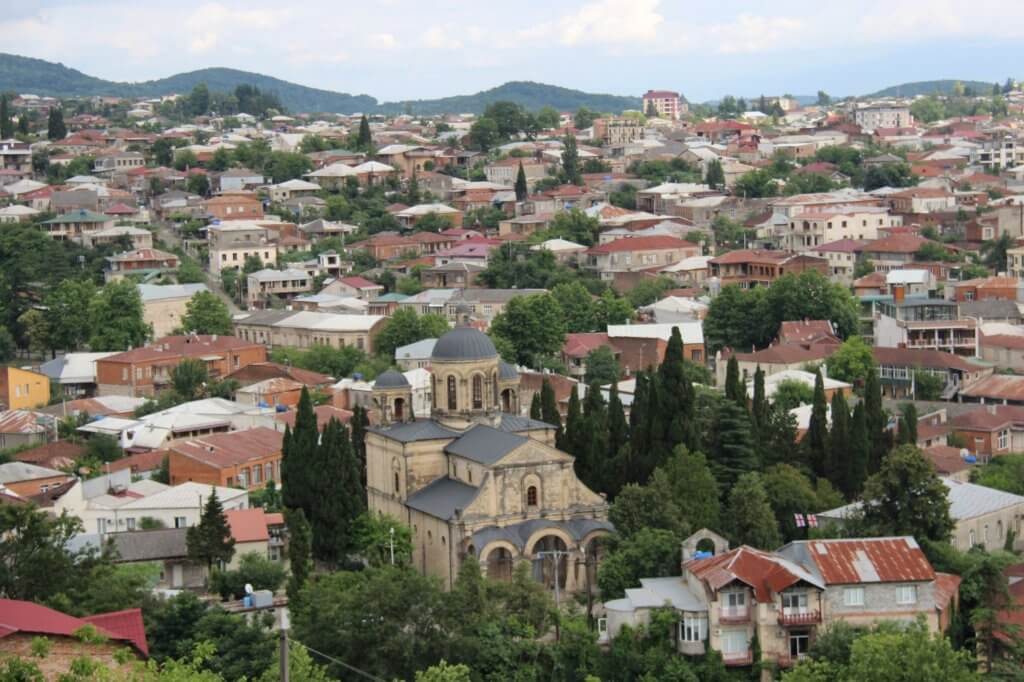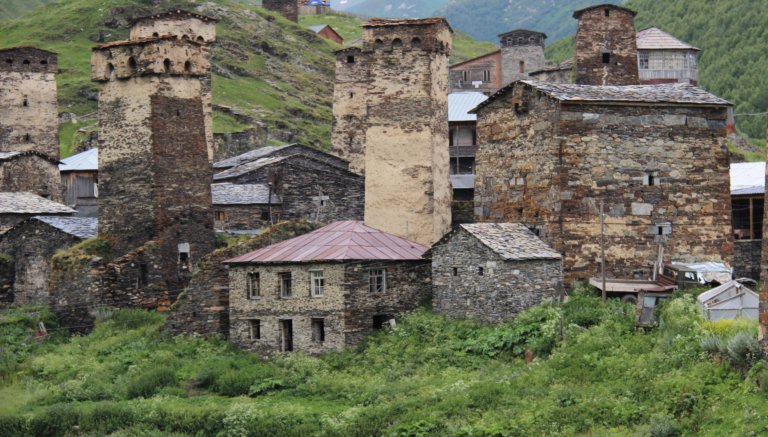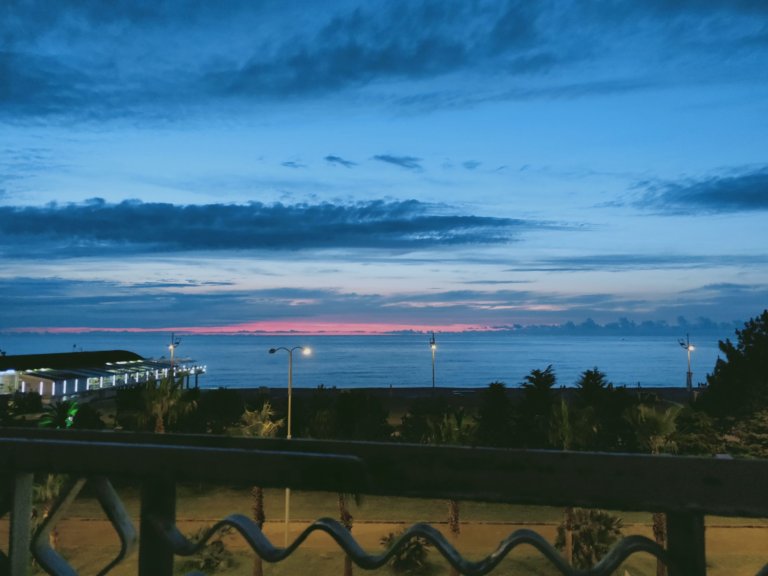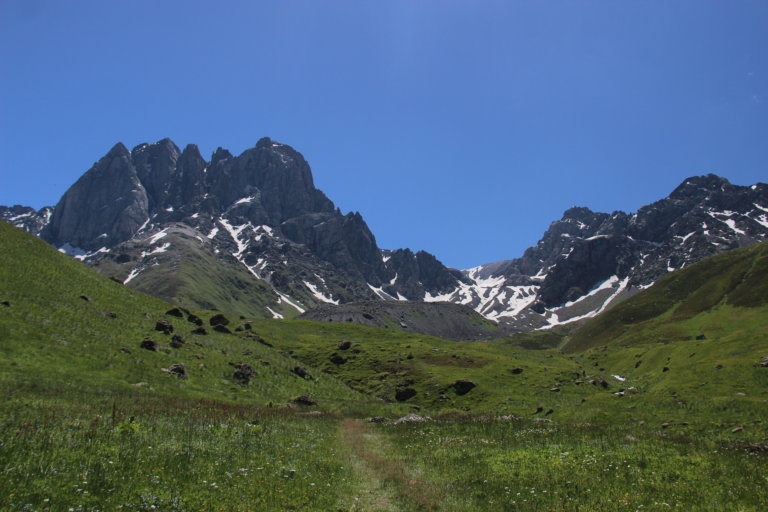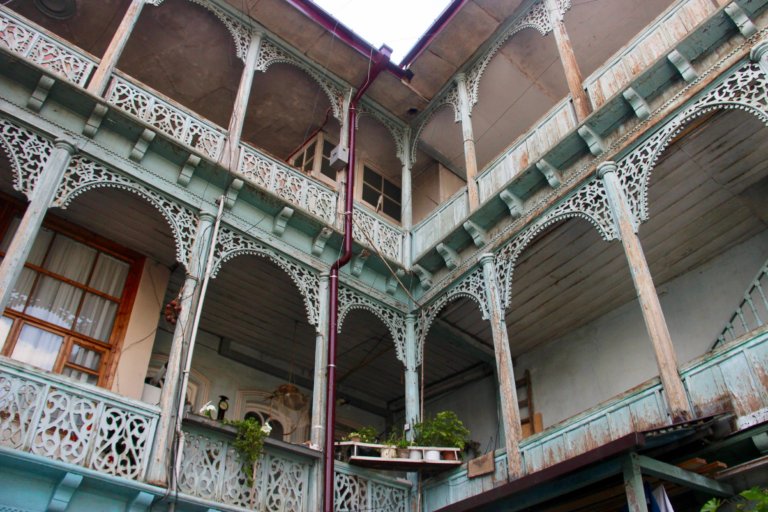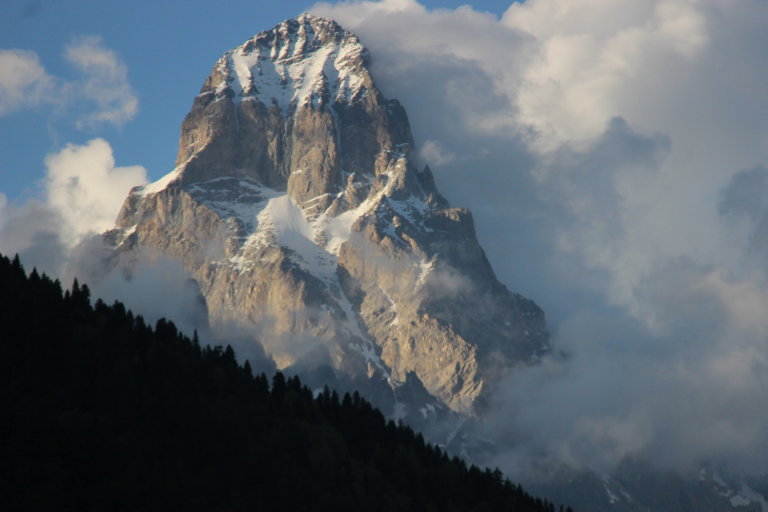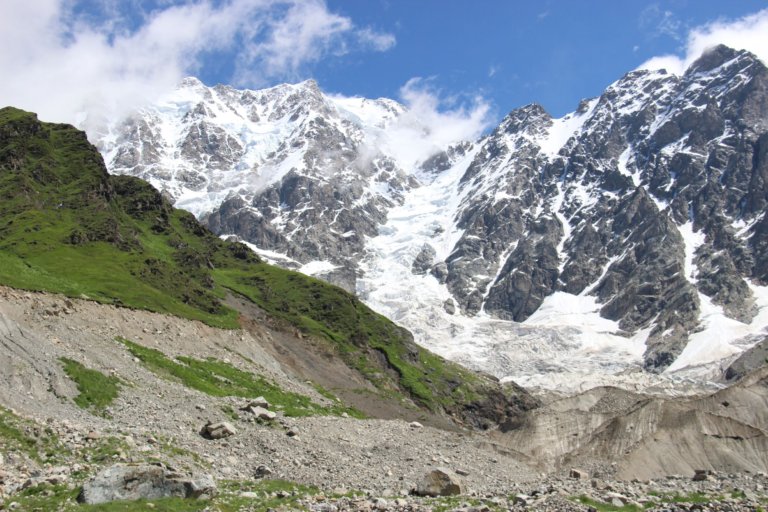Georgia. Kazbegi – Kutaisi. Day 66 July 4th 2019
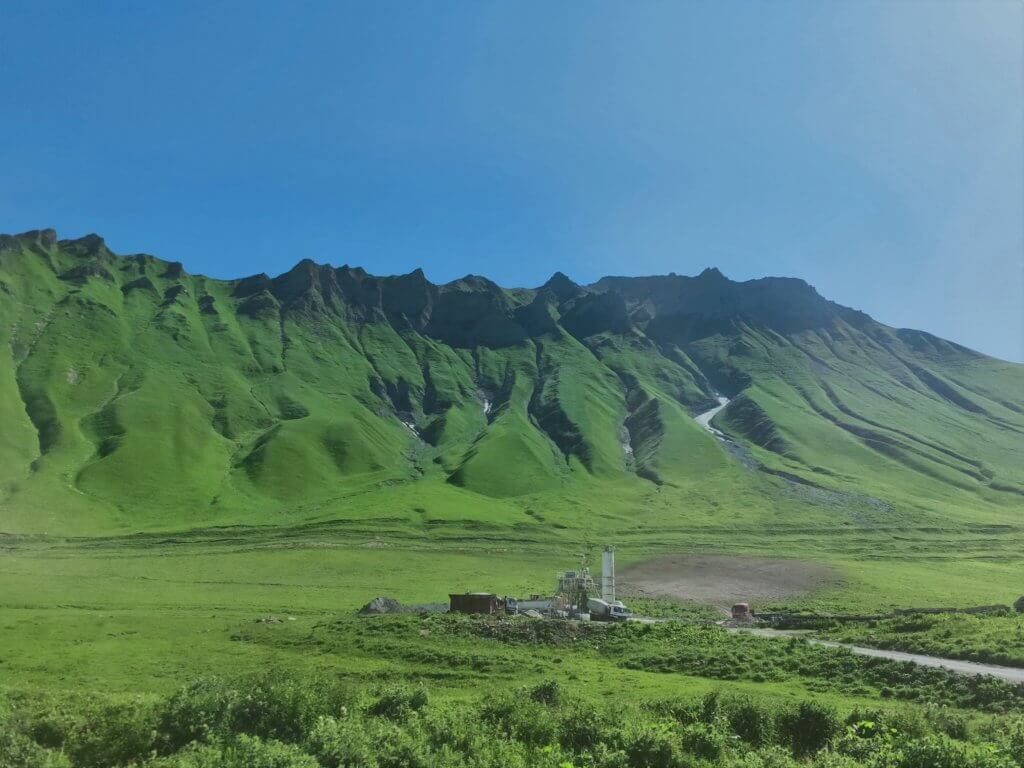
A long drive from the mountains of Kazbegi to the city of Kutaisi. The scenery along the way had us reminiscing about other road trips where scenery was also spectacular. The Faroe Islands springs to mind – green, sharp mountains leading down to equally green plains. Quickly remembering we don’t do comparisons – we sat back and enjoyed the magnificent views and new experiences.
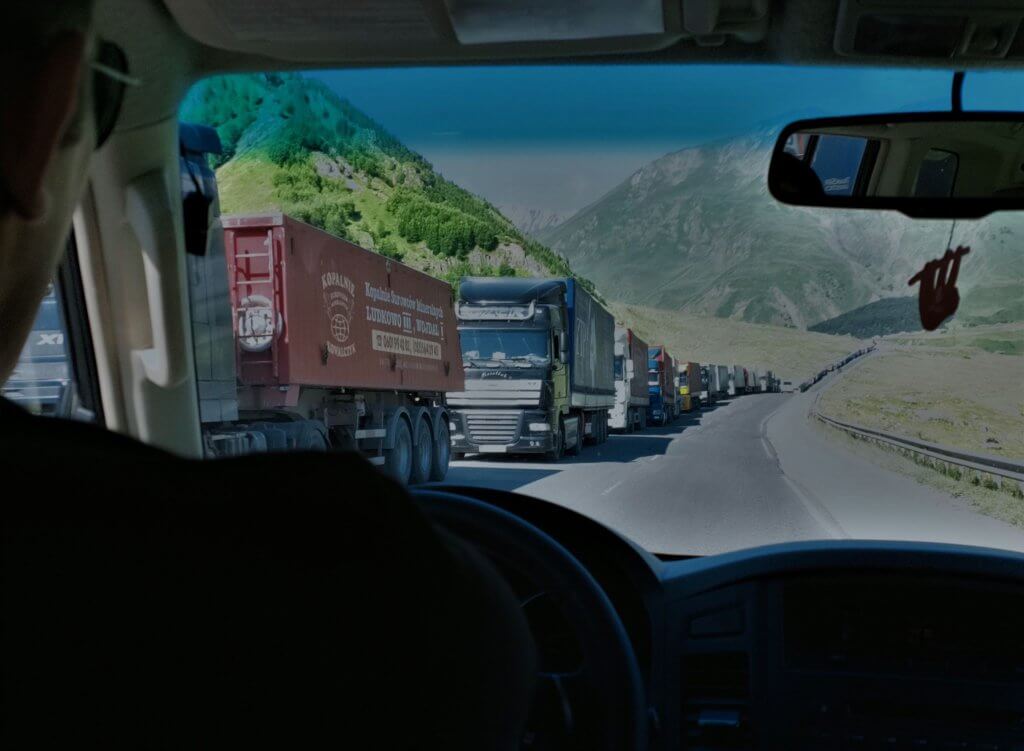
The first new experience for us was to see the lengthy lines of lorries snaking along the side of the road. Parked in a long line farther than one could see. Today this line was about 3km (and a 2 or 3 day wait for the drivers). In winter the line can reach 10km – and drivers can spend a cold week on the side of the road, waiting to cross the border to Russia.
As we passed drivers congregated on the roadside smoking, chatting, waiting – turning to peer into our car as we passed. Apparently in winter drivers are more restricted trying to keep warm over the endless wait.

Along the way we stopped in a village where roadside stalls lined the highway and flat loaves of oddly brown coloured bread hung from the little stalls. Despite questions about what these almost artificial looking loaves were – no answers were forthcoming until a stop towards the end of the stalls. Shortly loaves of delicious sweetly-smelling bread were passed around the car. Nazuki is a speciality sweet bread of the region. Delicious – a little like warm hot cross buns- scented fruit and cinnamon bread. The Kiwi in me missed butter melting over the top, still eat as the locals and pieces of Nazuri were torn off and eaten immediately without adornment.
Sightseeing for the day included –
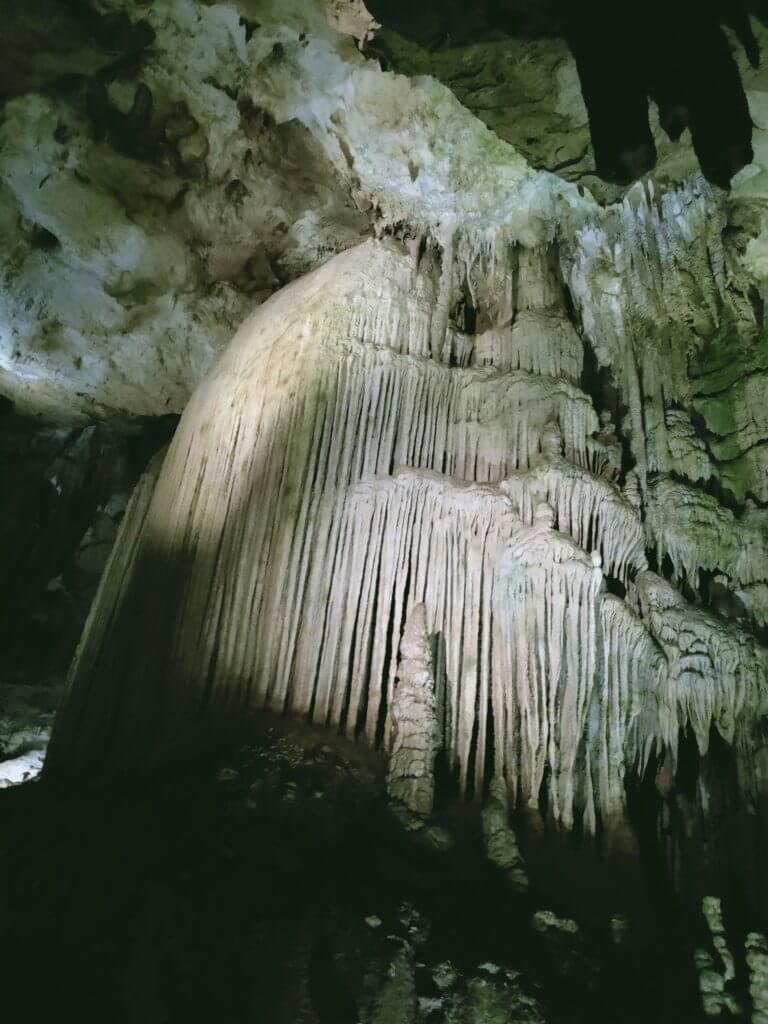
The Prometheus Cave in Kumistavi village,(our first question – who was Prometheseus – racking our history brains). “Legendary Prometheus who under Greek mythology stole fire from Gods was chained to Khvamli Mountain which can be seen from Prometheus Cave”
The cave was discovered in 1984 and opened again to the public in 2011. An extensive cave system of 30km has been explored thought it is thought there is that length again yet to be discovered, The walking path is about 1.5km through several large halls.
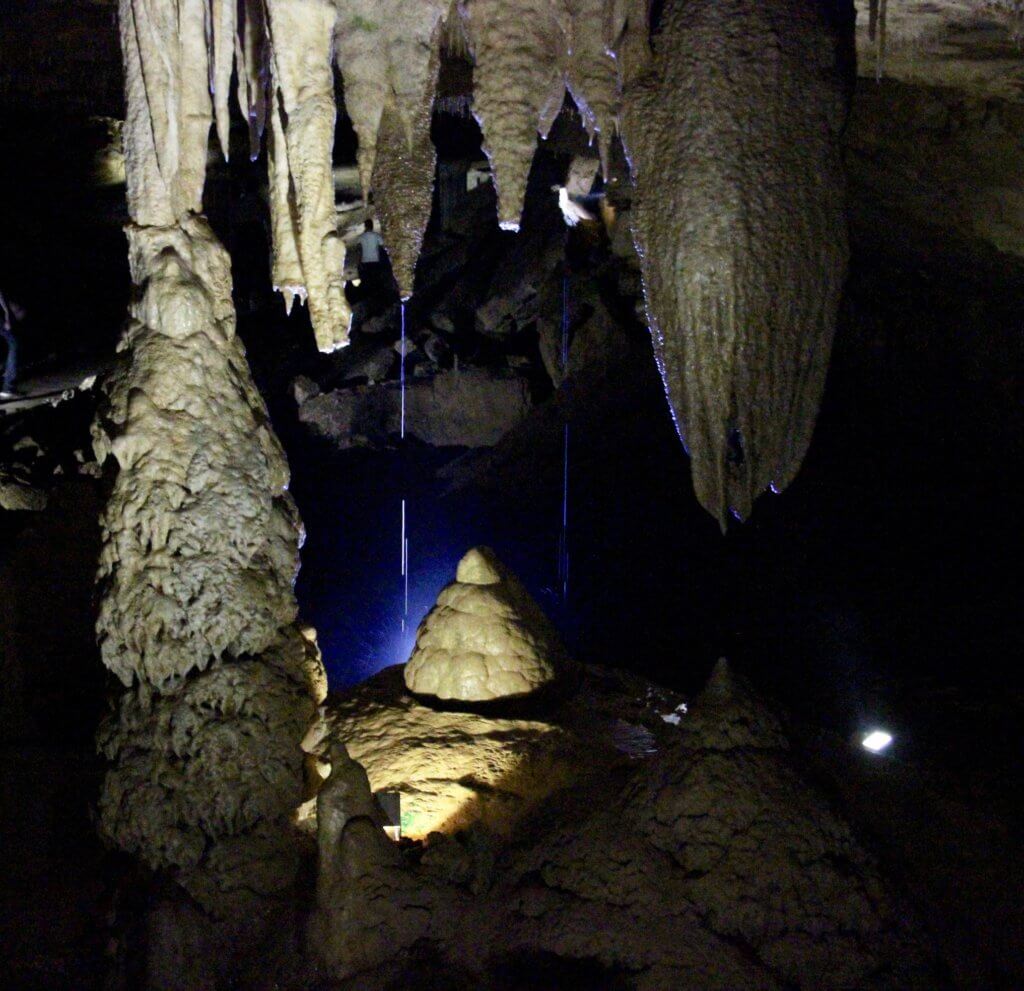
Many of the forms throughout the Prometheus cave were larger than life – huge – ginormous. Lighting was mostly natural with some colouring in sections – thankfully minimal colouring given the garish scenes advertised on some sites explaining the caves – a neon extravaganza with music- that we were spared. This was not the first caves we had visited to be treated thus, but today a mainly au naturale experience.
A series of narrower tunnels lead into large cavernous halls that were filled with stalagmites, stalactites and other forms. The underground lake and river levels were lower than normal and more a stream than river. It is possible to boat through sections but not possible today.
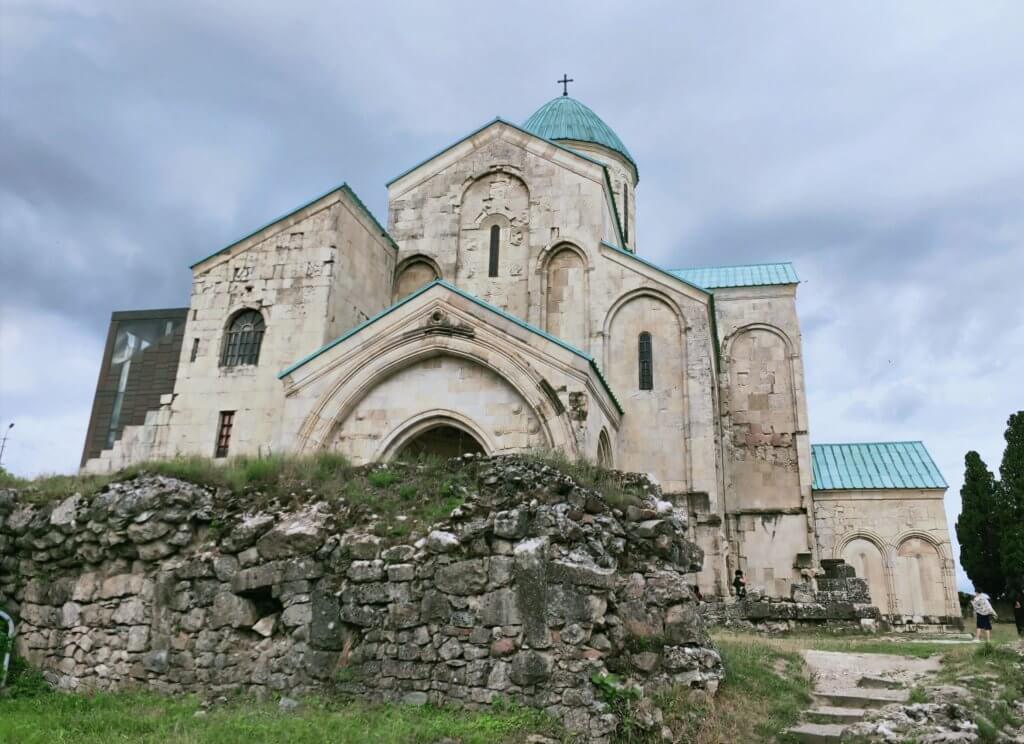
Bagrati Cathedral – so called because it was built in the 11th-century during the reign of King Bagrat II. Subsequent invaders destroyed the cathedral. Its most recent rebuild was in 2012 and is said to be a masterpiece of blending modern and medieval Georgian architecture. This lead to the cathedral’s UNESCO World Heritage listing being contentious owing to the modern look and nature of the renovation work carried out. It has now been removed from UNESCO.
Inside the cathedral the modern supports and addition are in stark contrast with the older stone structure. From the outside the original stones of the 11th century, the stone cathedral and the modern reconstruction are all visible.
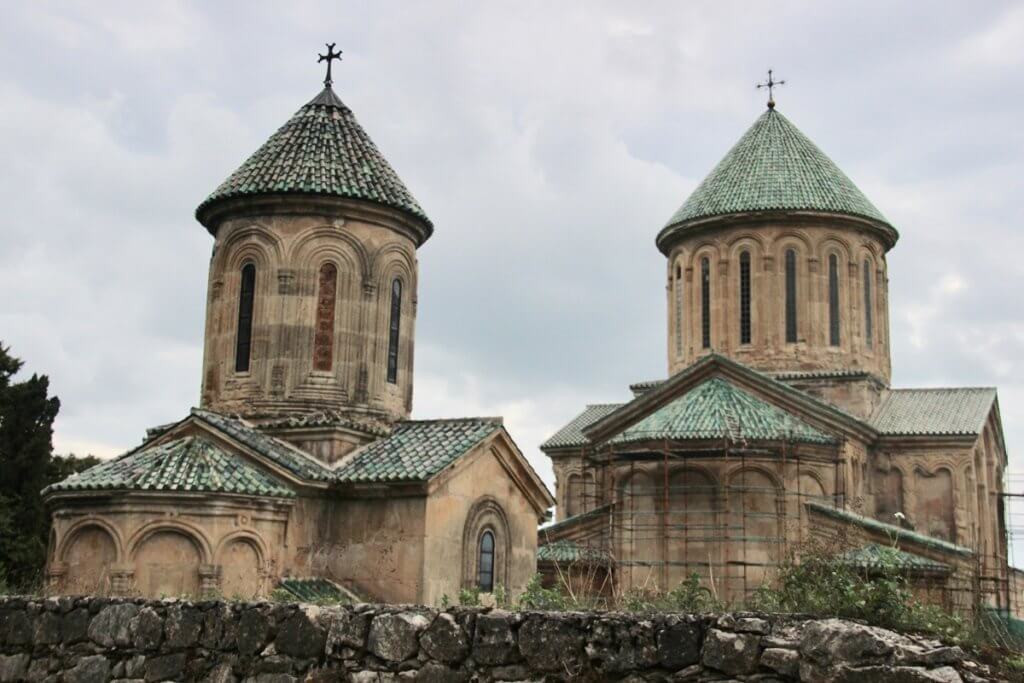
Gelati Monastry complex– the favourite of the day. Visible from Kutaisi but some distance out, high on a hillside.
The monastery was founded in the 12th century by King David the Builder (even his title appealed). So named because of his role in bringing Georgia together as one nation and building infrastructure.
King David IV (the Builder) died before completion of the monastery. He requested to be buried at the entranceway to the monastery where the people of Georgia could walk over his heart as they entered. This was done and remained so until the entranceway was moved more recently.
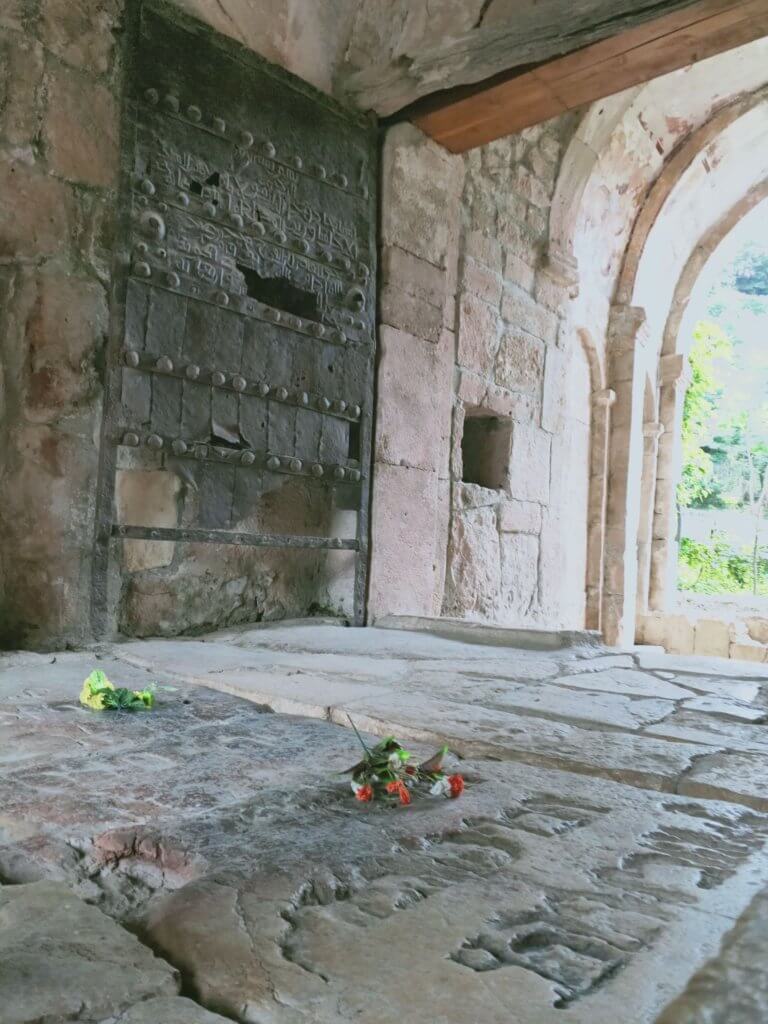
Known as one of the most successful rulers of Georgia. Bringing separate regions into one country. A frescoe at the entrance and then again inside on the left side wall depicts King David, The frescoe on the interior wall of the Church of Virgin the Blessed, shows King David holding a model of this Church.
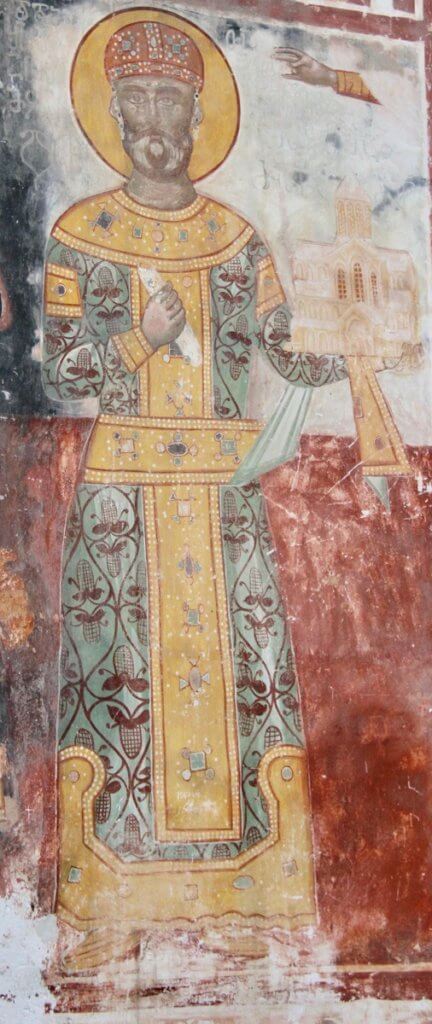
King David established the first learning academy in Georgia within the monastery. Within many famous Georgian academics, poets, writers, philosphers – lived and worked. Buildings were dedicated to the subjects taught including the sciences, astronomy, theology.
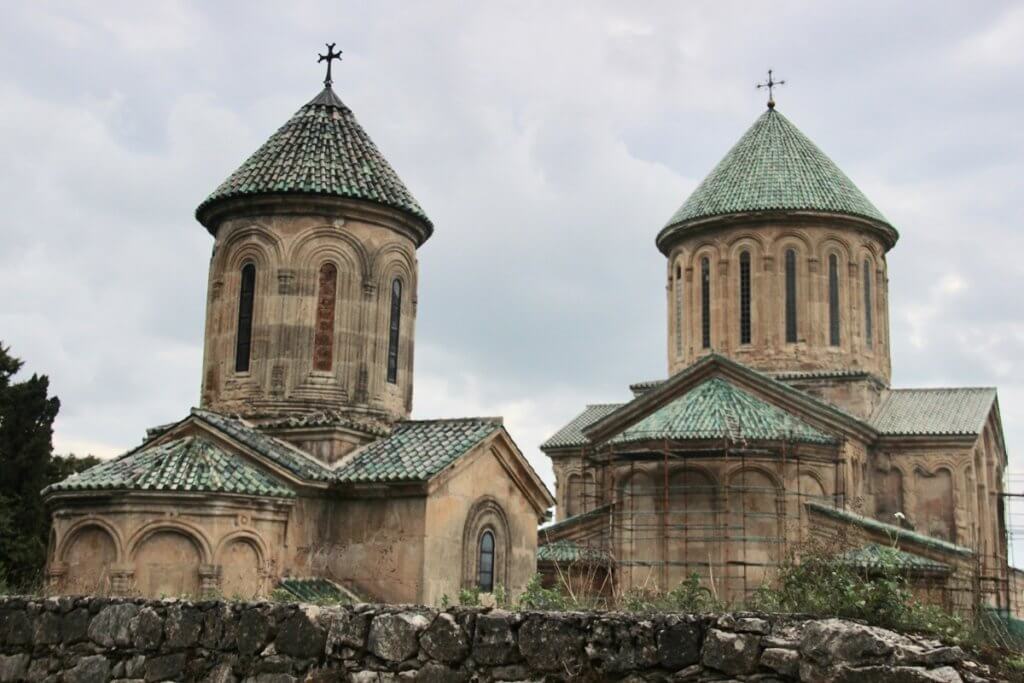
The Gelati monastery is set high on a hill about 11kms from Kutaisi city. Its complex of churches with there unusual green coloured tiled rooves can be seen from many parts of the city.
The exterior has a series of rooves with unusual shaped tiles in an azure and emerald green colour – made from copper covered with a patina to give the green shade which has been matched with a sample of the original found during excavations
The interior of the main church on the site is breathtaking as you enter to see the entire surface covered with the remains of frescoes.
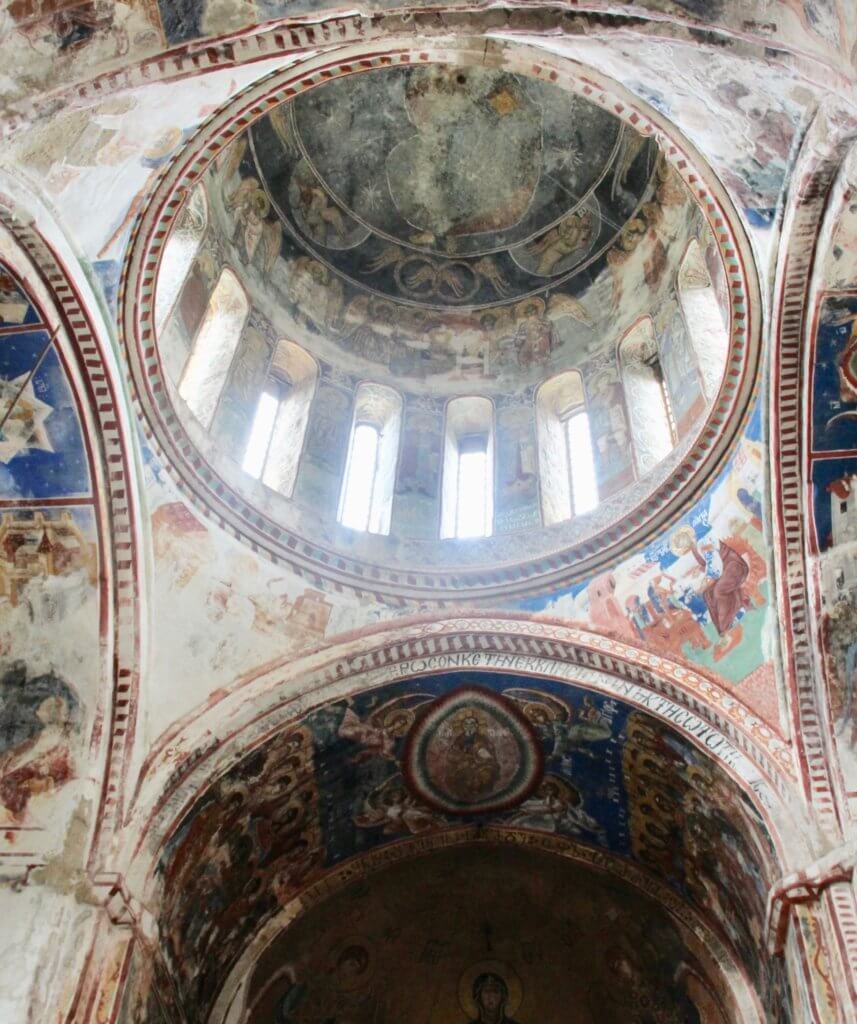
At the end of the day an impromptu drive around Kutaisi while Google maps begoogled us – it did givean opportunity to glimpse the second largest city in Georgia – after Tbilisi. We finally found our hotel for the night. Tucked in a tiny laneway, the GPS route made it seem a distance from the city centre– we discovered it was a 7min walk! A short walk to the centre for dinner and back to the Terrace Hotel
A short visit to a city we decided we would enjoy more time in ……. one day!
